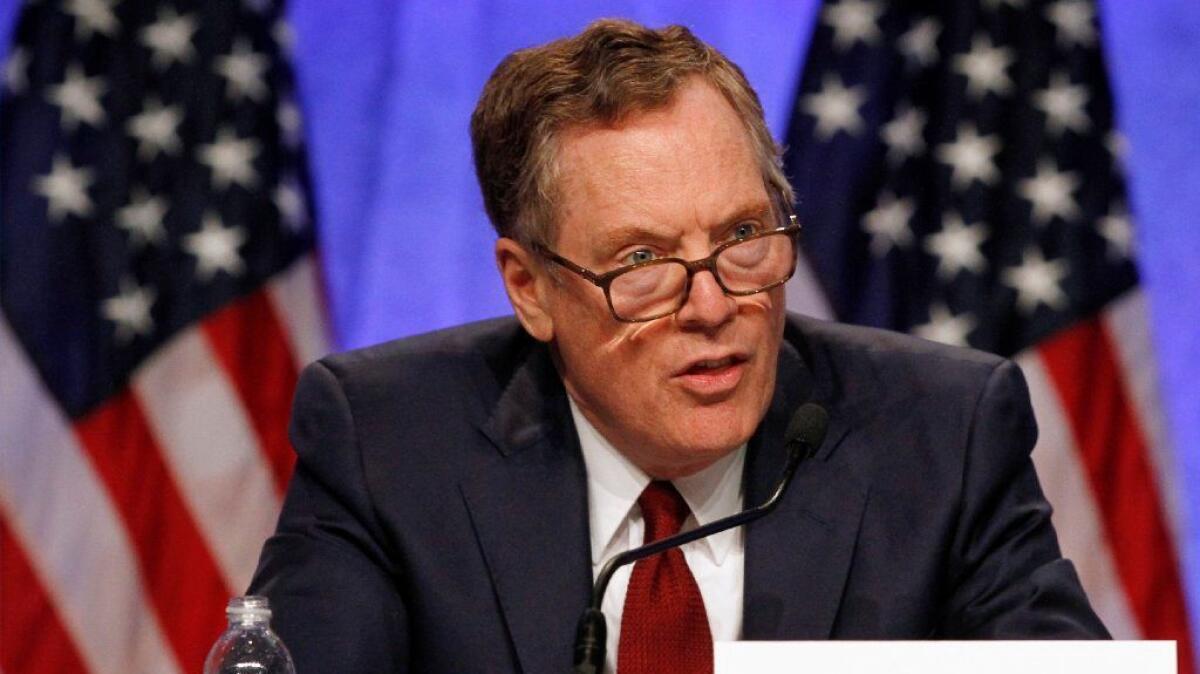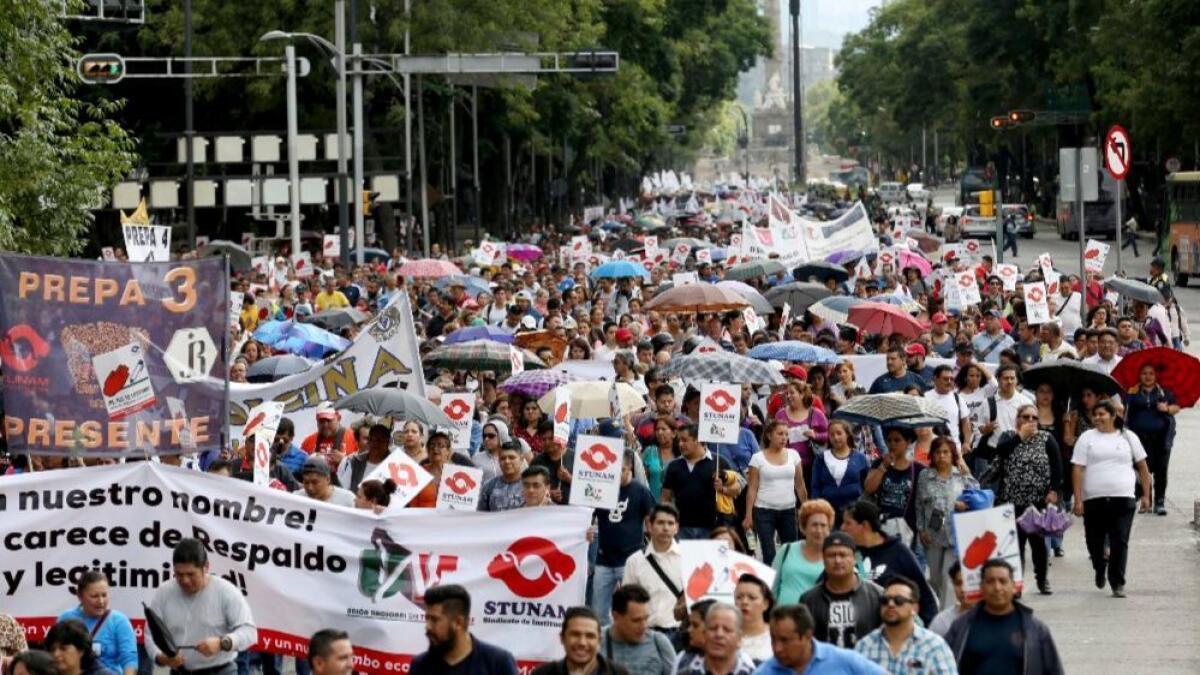U.S. lays out ambitious schedule for NAFTA talks as opening round concludes

- Share via
Reporting from Washington — After the opening round of talks to revamp the North American Free Trade Agreement, at least this much is known: The U.S. is pushing for comprehensive changes and racing to meet a tight political calendar.
In a joint statement issued Sunday upon conclusion of the first session, trade officials from the U.S., Canada and Mexico outlined an aggressive schedule for future meetings. They will reconvene Sept. 1-5 in Mexico and then later that month in Canada, to be followed by another round in Washington in October.
The accelerated pace is aimed at wrapping up talks by the end of the year, or early 2018 at the latest, to avoid political complications in Mexico’s presidential vote in the summer and the U.S. midterm elections later in the fall.
But it is far from clear how realistic that timetable is, given the ambitious plans outlined by the Trump administration to rewrite major sections of the 23-year-old pact, including the United States’ much-opposed focus on reducing the country’s trade deficit and strengthening its hand in enforcement.
“They’re the ones who said they want more than just tweaking [of NAFTA] — and they want it very fast,” said John Masswohl, director of government and international relations for the Canadian Cattlemen’s Assn., who, along with other business groups from all three countries, was at hand monitoring the talks. “You can have it quick or have it meaningful. You can’t have both.”
President Trump’s top trade official, Robert Lighthizer, launched the talks Wednesday in Washington, saying NAFTA has “fundamentally failed” and blaming it for domestic manufacturing woes and the loss of about 700,000 U.S. jobs.
Lighthizer’s tough words were in sync with his boss’ harsh rhetoric and pledge during the campaign and after his inauguration to overhaul NAFTA or withdraw from it.

During the last five days, U.S. negotiators were said to have introduced a flurry of proposals to their Mexican and Canadian counterparts. The joint statement said that more than two dozen negotiating topics were covered and that the three sides made “detailed conceptual presentations” and began the task of developing texts.
The statement did not characterize the tenor of the talks, nor did it address any specific subject of negotiations. There was no news conference afterward, and trade negotiators left quietly or declined to comment. Representatives of Lighthizer’s office did not return messages.
Although U.S. trade officials gave briefings earlier Sunday to a handful of stakeholders and were expected to update lawmakers and others in the coming days, the lack of specifics or reported outcomes gave rise to early concerns about transparency as the talks proceed.
“A closed process will lead people to assume it’s business as usual even if that is not what’s happening,” said Lori Wallach, director of Public Citizen’s trade program, after reading the short and bland joint statement.
The negotiations were held in a Marriott hotel near downtown Washington. Negotiators were ensconced in various meeting rooms as journalists and observers looked on, including some of the more than 500 representatives from American companies, labor groups and civil society with clearance to view certain NAFTA proposals made by the U.S.
There were no protests in the streets, unlike at other international trade meetings, although last week thousands marched in Mexico City over NAFTA as the talks began.
To a large extent, Mexico and Canada are aiming to preserve NAFTA as is, with its duty-free trade among the countries, while updating the agreement with new chapters on e-commerce and other areas of cross-border business reflecting the new economy.
The Trump administration has talked about wanting wholesale changes, including new provisions for “substantial” American — not just North American — content on cars that qualify for duty-free trade; the elimination of a NAFTA panel for settling certain disputes; and “Buy American” preferential treatment for domestic businesses that bid on U.S. government procurement contracts.
Canadian and Mexican officials have voiced opposition to all of those proposals, as well as Trump’s priority on reversing U.S. trade deficits, which the president views as the key measure of bilateral trade relations. There was no indication that the U.S. would be introducing a separate chapter on trade deficits and actions that would be triggered should those figures increase.
During the first round, the U.S. did not offer proposals for revising labor standards — the Canadians have called for “progressive” labor rules. Nor did U.S. negotiators table other potentially contentious issues such as provisions to stop currency manipulation.
Follow me at @dleelatimes
More to Read
Inside the business of entertainment
The Wide Shot brings you news, analysis and insights on everything from streaming wars to production — and what it all means for the future.
You may occasionally receive promotional content from the Los Angeles Times.











